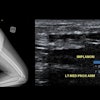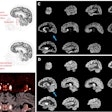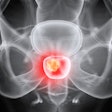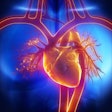
NEW YORK (Reuters Health), Aug 31 - Early cyclical neridronate treatment has positive effects on growth and fracture rate in infants with severe osteogenesis imperfecta (OI), according to researchers.
In a study published in the August issue of the Journal of Pediatrics, Italian researchers prospectively assessed the efficacy of bisphosphonate treatment in infants with severe OI. Included in the study were 10 children with OI type III. Of these, five (group A) started treatment (2 mg/kg neridronate given intravenously for two consecutive days, every three months) at a mean age of 37 days and five (group B) started treatment after 6 months (mean age of 220 days). Ten untreated children matched for sex, age, and clinical severity of OI, served as an historical control group (group C). [p 174, para 2,3 and p 175, col 1, para 1,2,3]
Dr. Franco Antoniazzi and colleagues from the University of Verona, Italy, measured weight, length, and number of fractures at baseline and every three months. They measured blood cell count, serum and urinary levels of calcium, phosphate, creatinine, blood alkaline phosphatase (ALP), 25-hydroxyvitamin D, parathyroid hormone (PTH), osteocalcin (Oc), and insulin-like growth factor I (IGF-I), urinalysis and urinary excretion of the bone resorption marker type I collagen N-terminal telopeptide (uNTX) at baseline and every six months. [p 175, col 1, para 5]
Patients in group A grew significantly better in weight and length than those in groups B and C (p < 0.05) in the first six months. "Concerning the fracture rate, the incidence of radiologically confirmed fractures significantly decreased in group A in comparison to groups B and C (2.4 versus 6.0 and 6.8 fractures/year; p < 0.05) during the first six months of treatment," Dr. Antoniazzi and colleagues explain. "In the second six months, both groups A and B had a significantly lower fracture rate in comparison to group C (2.0 and 2.8 versus 5.4 fractures/year; p <0.05)." [p 176, col 2, para 2,3]
Only patients in group A experienced significant increases in osteocalcin and IGF-I levels after 12 months of therapy. There was a significant decline in the urine uCa/uCr ratio in treated patients compared with untreated patients (p < 0.05). All treated patients experienced improvements in vertebral body area and the structure of vertebral bodies. This was especially true in group A. [p 177, col 1, para 2 and col 2, para 1,2].
Last Updated: 2006-08-30 14:23:42 -0400 (Reuters Health)
J Pediatr 2006;149:174-179.
Related Reading
DEXA reveals relationship between BMD and children with fragile bones, February 5, 2005
Copyright © 2006 Reuters Limited. All rights reserved. Republication or redistribution of Reuters content, including by framing or similar means, is expressly prohibited without the prior written consent of Reuters. Reuters shall not be liable for any errors or delays in the content, or for any actions taken in reliance thereon. Reuters and the Reuters sphere logo are registered trademarks and trademarks of the Reuters group of companies around the world.
















